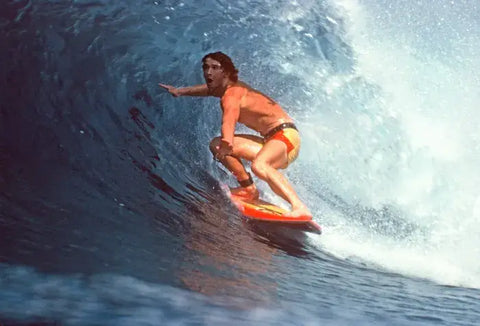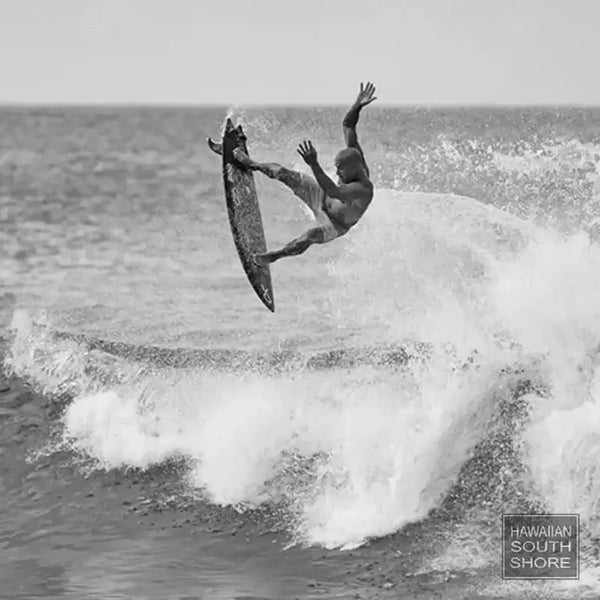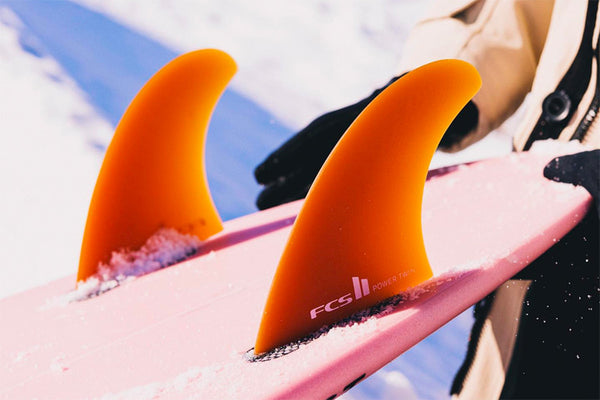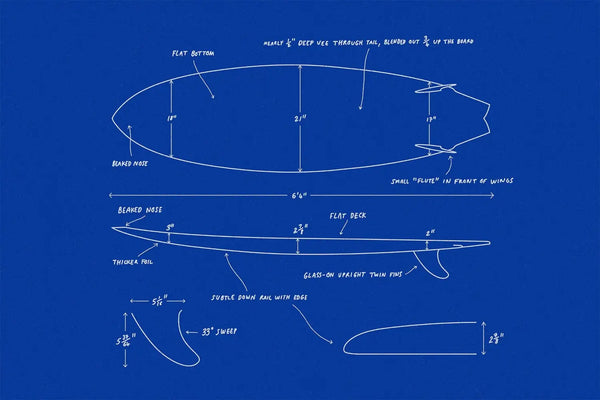The Ultimate Guide to Twin Surfboards: Unleash Your Surfing Potential
Share
Main Points
- Introduction to twin surfboards
- History and evolution of twin fins
- Design characteristics of twin surfboards
- Performance benefits of twin fin setups
- Choosing the right twin surfboard
- Riding techniques for twin fins
- Maintenance and care tips
Rediscovering the Magic of Twin Surfboards
In the ever-evolving world of surfing, twin surfboards have made a remarkable comeback. These versatile boards, characterized by their unique two-fin setup, offer a perfect blend of speed, maneuverability, and flow. Whether you're a seasoned pro or a curious beginner, this ultimate guide will dive deep into the world of twin surfboards, helping you understand their appeal and potentially revolutionize your surfing experience.
The Rich History of Twin Fins
Twin fin surfboards have a fascinating history that dates back to the 1940s. However, it wasn't until the late 1970s that they gained significant popularity, thanks to Australian surfer Mark Richards. Richards dominated the competitive scene with his twin fin designs, winning four consecutive world titles from 1979 to 1982.

Evolution of Twin Fin Design
Over the years, twin fin designs have evolved, incorporating modern materials and shaping techniques. Today's twin surfboards combine the best of retro aesthetics with cutting-edge performance, appealing to a wide range of surfers seeking a unique riding experience.
Understanding Twin Surfboard Design
Twin surfboards are characterized by their distinctive features that set them apart from other board types:
- Fin Configuration: Two fins placed closer to the rail, typically symmetrical and parallel to each other.
- Wide Tail: Often featuring a fish or swallow tail design for increased surface area and lift.
- Fuller Outline: Generally wider and shorter than traditional thruster boards.
- Flatter Rocker: Less curve from nose to tail, promoting speed and glide.
Performance Benefits of Twin Fins
Twin surfboards offer several advantages that make them a favorite among many surfers:
- Increased Speed: The reduced drag from two fins allows for quicker acceleration and higher top speeds.
- Enhanced Maneuverability: The fin placement enables tighter turns and more responsive directional changes.
- Smooth Flow: Twin fins provide a unique feeling of flow and connection with the wave.
- Versatility: Suitable for a wide range of wave conditions, from small and mushy to overhead and hollow.
Fin Setups Face-Off: Unlocking the Perfect Ride
Choosing the right fin setup can dramatically impact your surfing experience. This comprehensive comparison table breaks down the key characteristics of twin fins, thrusters, quad fins, and single fins, helping you understand how each configuration affects your ride.
Feature |
Twin Fins |
Thruster(3 Fin) |
Quad Fin |
Single Fin |
| Maneuverability | High | Moderate | Moderate | Low |
| Speed | Fast down the line | Requires Pumping | Fast | Fast |
| Control in Turns | Less control in tight turns | Good Control | Good stability and control | Less Control |
| Ease of Learning | Moderate | Easy | Moderate | Moderate |
| Stability | Less stable in rough conditions | More Stable | Stable | Less Stable |
| Ideal Condition | Small to small- medium waves | Versatile | Versatile, good for heavier surfers | Small to medium surf |
| Drive | High | Low (needs pumping) | High | High |
| Performance in Big Waves | Less Suitable | Good hold | Good hold | Good hold (depending on size) |
| Turn Style | Wide, carving turns | Sharp, quick turns | Quick turns with control | Smooth, slow turns |
This table summarizes the key differences between twin fins and other fin setups, highlighting their respective strengths and ideal conditions. Keep in mind that these are general characteristics, and individual board designs and surfer preferences can influence performance.
Choosing the Right Twin Surfboard
Selecting the perfect twin surfboard depends on various factors:
Skill Level
- Beginners: Opt for wider, more stable designs with plenty of volume.
- Intermediate: Look for balanced shapes that offer both stability and performance.
- Advanced: Consider more refined, performance-oriented twin fins for maximum responsiveness.
Wave Conditions
- Small Waves: Choose fuller outlines and flatter rockers for better glide and speed generation.
- Medium Waves: Balanced designs work well, offering a mix of speed and maneuverability.
- Larger Waves: Consider slightly narrower tails and more pronounced rockers for better control in powerful surf.

Mastering Twin Fin Riding Techniques
To get the most out of your twin surfboard, consider these riding tips:
- Focus on smooth, flowing turns rather than aggressive snaps.
- Utilize the board's speed by generating momentum through pumping.
- Experiment with different foot placements to find your sweet spot.
- Practice bottom turns and cutbacks to harness the twin fin's unique characteristics.
Maintenance and Care for Your Twin Surfboard
Proper maintenance ensures your twin surfboard performs at its best:
- Regularly check and tighten fin screws.
- Clean your board after each session, paying extra attention to the fin boxes.
- Use a high-quality board bag for protection during transport.
Embrace the Twin Fin Revolution
Twin surfboards offer a unique and exciting way to experience wave riding. With their blend of speed, maneuverability, and flow, they provide a refreshing alternative to traditional thruster setups. Whether you're looking to add variety to your quiver or seeking a board that excels in specific conditions, a twin fin surfboard might be the perfect choice to elevate your surfing game.
By understanding the history, design, and performance characteristics of twin surfboards, you're now equipped to make an informed decision and potentially discover a whole new dimension of surfing enjoyment. So why not give twin fins a try? You might just find yourself falling in love with this classic yet innovative surfboard design.
SHOP NOW!
More to read:
Mark Richards, the Twin Fin, and the Perfect FCS II Fin Design for Summer
Understanding FCS'S Fin Families
The H4/MF Twin Fin from FCS and Mick Fanning


